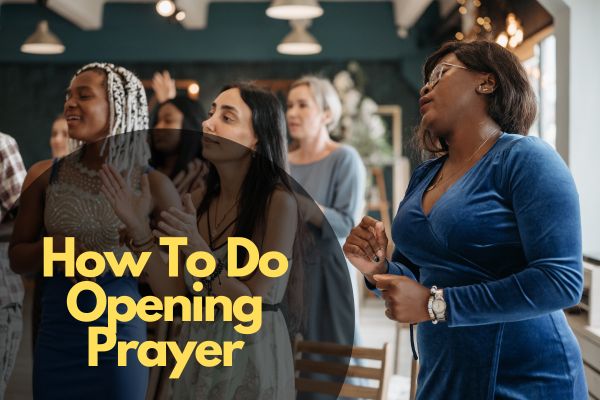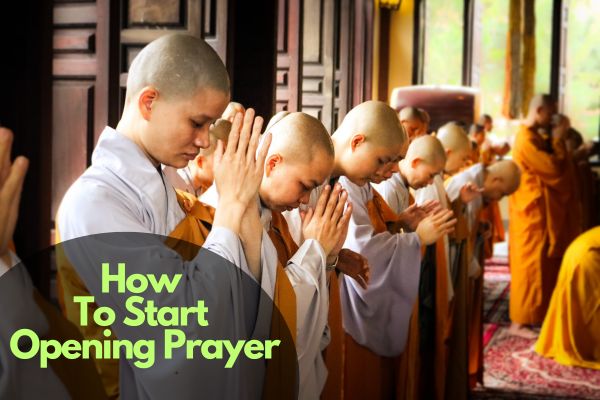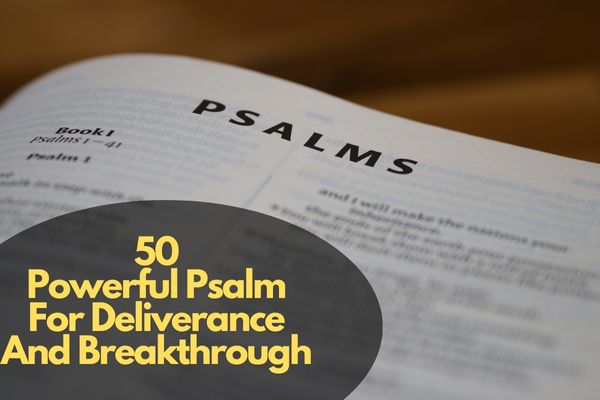Opening prayers hold a significant place in various religious and spiritual traditions, as they set the tone for gatherings, ceremonies, and events.
Whether you are leading an opening prayer for a religious service, a family gathering, or a public event, it’s important to approach this responsibility with reverence and mindfulness.
In this comprehensive guide, we will explore the art of delivering an opening prayer, step by step.
How To Do Opening Prayer
An opening prayer is more than just a customary ritual; it is a way to connect with a higher power, express gratitude, seek guidance, and foster unity among participants.
Whether you are a religious leader, a member of a community, or someone asked to lead an opening prayer, this article will provide you with valuable insights and tips to make your prayer meaningful and impactful.
Understanding the Significance of Opening Prayer
Before delving into the practical aspects of leading an opening prayer, it’s essential to understand why this practice holds such importance. An opening prayer:
- Sets the spiritual and emotional tone for an event.
- Seeks blessings, guidance, and protection.
- Expresses gratitude for the occasion and participants.
- Creates a sense of unity and togetherness.
Preparing for the Opening Prayer
Selecting a Suitable Location
The choice of location can greatly impact the effectiveness of your opening prayer. Ensure that the place is quiet, conducive to reflection, and free from distractions.
Choosing the Right Time
Consider the timing of your prayer. Is it the start of a religious service, a family gathering, or a community event? Align your prayer with the purpose and timing of the gathering.
Gathering Participants
Identify who will be present during the prayer. Knowing your audience will help you tailor your prayer to their needs and expectations.
Structuring Your Opening Prayer
A well-structured opening prayer can be more impactful. It typically consists of the following components:
Introduction and Invocation
Begin by invoking the presence of a higher power and setting the intention for the prayer.
Gratitude and Thanksgiving
Express gratitude for the occasion, the participants, and the blessings received.
Intercessions and Petitions
Pray for specific needs, challenges, or intentions relevant to the gathering.
Closing and Amen
Conclude the prayer with a heartfelt closing, often sealed with an “Amen.”
Writing Your Opening Prayer
The words you choose for your prayer matter. Keep these tips in mind when composing your prayer:
Personalize Your Prayer
Make the prayer personal and relevant to the occasion or the audience.
Use Clear and Simple Language
Avoid complex language or jargon. Your prayer should be easily understood by all.
Include Relevant Scriptures or Quotes
Incorporate verses from holy texts or meaningful quotes that resonate with the theme of your prayer.
Delivery and Presentation
How you deliver your prayer is as important as the words you say:
Maintaining Eye Contact
Engage with your audience by maintaining eye contact, creating a sense of connection.
Speaking Clearly and Audibly
Ensure that your voice is clear and audible so that everyone can hear and follow along.
Expressing Sincerity and Reverence
Approach the prayer with sincerity and reverence, conveying your deep respect for the occasion.
Engaging the Participants During The Opening Prayer
A meaningful opening prayer can engage participants and foster a sense of unity:
Encouraging Participation
Invite participants to join in specific parts of the prayer, such as responses or shared intentions.
Fostering a Sense of Unity
Use inclusive language and themes that promote a sense of togetherness.
Allowing Moments of Silence
Silence can be powerful. Include moments of reflection and silence in your prayer.
Common Mistakes to Avoid In Opening Prayer
To make your opening prayer impactful, avoid these common mistakes:
Being Overly Lengthy
Keep your prayer concise and focused to maintain participants’ attention.
Using Inappropriate Language
Choose words carefully to ensure they are respectful and appropriate for the occasion.
Lack of Focus and Clarity
Ensure that your prayer has a clear focus and flows smoothly.
Tips for a Meaningful Opening Prayer
Consider these tips to enhance the meaning and impact of your opening prayer:
Reflect on the Occasion
Take time to contemplate the significance of the event or gathering.
Be Sensitive to Diverse Beliefs
Respect diverse beliefs and values within your audience.
Practice Mindfulness
Stay present and mindful while delivering your prayer.
Opening Prayer Examples
For inspiration and guidance, we provide examples of opening prayers suitable for various occasions and beliefs.
Conclusion
Leading an opening prayer is an opportunity to connect with a higher power, express gratitude, and set the tone for meaningful gatherings. By following the steps and tips outlined in this guide, you can deliver a heartfelt and impactful opening prayer that resonates with your audience.
FAQs
Q1: How long should an opening prayer be? A: An opening prayer should typically be concise, lasting no more than a few minutes to maintain participants’ engagement.
Q2: Can I personalize an opening prayer for a non-religious event? A: Absolutely, you can adapt an opening prayer to suit the nature and purpose of any event, religious or non-religious.
Q3: What if I am nervous about leading an opening prayer? A: Practice and preparation can help reduce nervousness. Remember that sincerity and reverence are more important than perfection.
Q4: Is it necessary to memorize the entire opening prayer? A: While memorization can be helpful, having written notes or an outline is perfectly acceptable.
Q5: Can I invite others to participate in the opening prayer? A: Yes, involving others in the prayer can foster a sense of unity and inclusivity.






